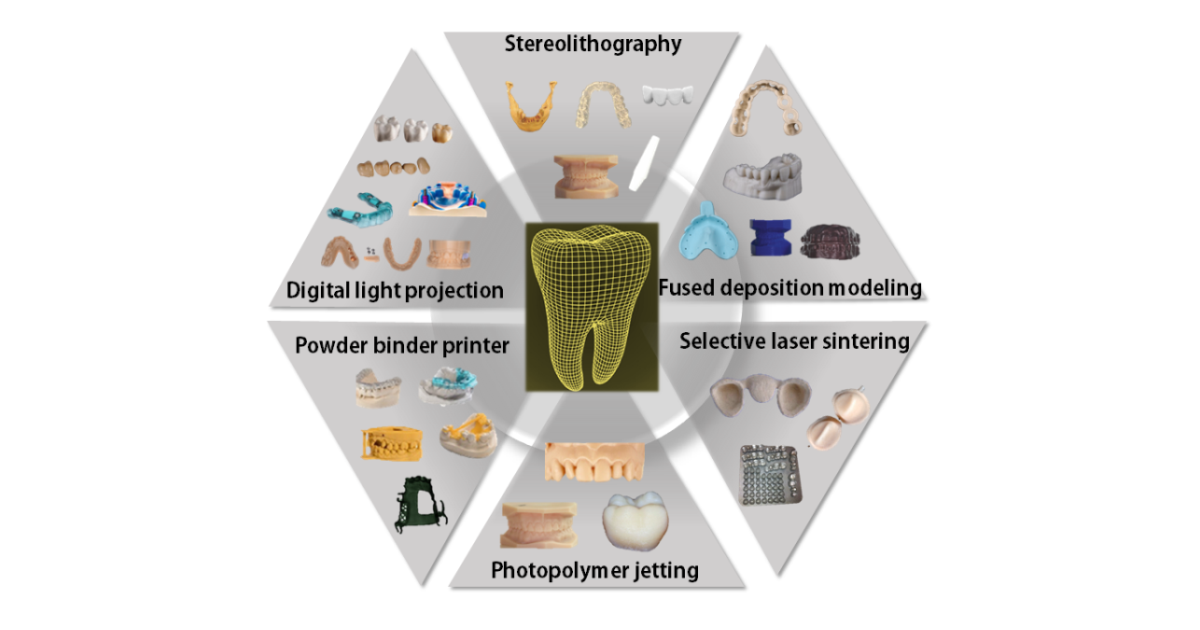- 3.2Impact Factor
- 6.4CiteScore
- 16 daysTime to First Decision
Research and Application Advantages of 3D-Printed Dental Materials
This special issue belongs to the section “Biomaterials“.
Special Issue Information
Dear Colleagues,
Additive manufacturing, also know as three-dimensional (3D) printing, is a technique used for stacking raw materials layer by layer in order to form the final object. In dentistry, 3D-printing technology has been applied to manufacture several dental devices such as surgical guides, dental splints, denture bases, provisional crowns, etc. Besides the development of the 3D printer, the development of the materials used in this technology is also crucial. In dentistry, the 3D-printable materials should possess sufficient mechanical properties, high accuracy, good environmental resistance, excellent biocompatibility, and so on.
In this Special Issue, we intend to collect recent reports of advancements in 3D-printable materials for dental application. Research articles, review articles, and short communications related to this topic are welcome.
Your submission is highly appreciated and would be valuable to this Special Issue.
Dr. Jingwei He
Guest Editor
Manuscript Submission Information
Manuscripts should be submitted online at www.mdpi.com by registering and logging in to this website. Once you are registered, click here to go to the submission form. Manuscripts can be submitted until the deadline. All submissions that pass pre-check are peer-reviewed. Accepted papers will be published continuously in the journal (as soon as accepted) and will be listed together on the special issue website. Research articles, review articles as well as short communications are invited. For planned papers, a title and short abstract (about 250 words) can be sent to the Editorial Office for assessment.
Submitted manuscripts should not have been published previously, nor be under consideration for publication elsewhere (except conference proceedings papers). All manuscripts are thoroughly refereed through a single-blind peer-review process. A guide for authors and other relevant information for submission of manuscripts is available on the Instructions for Authors page. Materials is an international peer-reviewed open access semimonthly journal published by MDPI.
Please visit the Instructions for Authors page before submitting a manuscript. The Article Processing Charge (APC) for publication in this open access journal is 2600 CHF (Swiss Francs). Submitted papers should be well formatted and use good English. Authors may use MDPI's English editing service prior to publication or during author revisions.
Keywords
- 3D printing
- dental application
- materials
- polymer
- ceramic
- composites
- metals.

Benefits of Publishing in a Special Issue
- Ease of navigation: Grouping papers by topic helps scholars navigate broad scope journals more efficiently.
- Greater discoverability: Special Issues support the reach and impact of scientific research. Articles in Special Issues are more discoverable and cited more frequently.
- Expansion of research network: Special Issues facilitate connections among authors, fostering scientific collaborations.
- External promotion: Articles in Special Issues are often promoted through the journal's social media, increasing their visibility.
- e-Book format: Special Issues with more than 10 articles can be published as dedicated e-books, ensuring wide and rapid dissemination.

